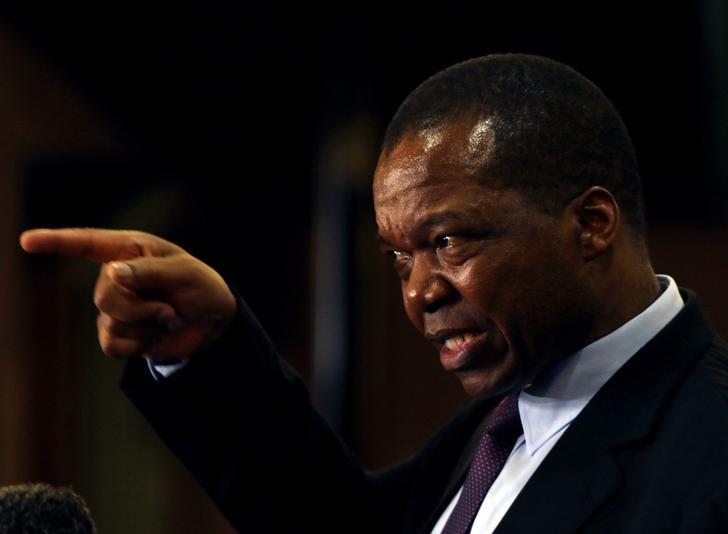Unpacking the latest MPC statement
Last week, the Reserve Bank of Zimbabwe’s Monetary Policy Committee (MPC) released a statement following its deliberations on recent economic and financial developments and their implications on monetary policy.
The MPC met on June 28, 2021, a day after the Zimbabwe National Statistics Agency (ZimStat) had released inflation figures for June 2021.
According to the statistics agency, the country’s year-on-year inflation for June slowed to 106,6 percent down from 161,9 percent.
What this meant is that the average prices of goods and services, though still increasing, were doing so at a much slower pace. To put it in other words, the margin of price increases was lower.
However, when comparing prices month-on-month, that is comparing average prices of goods and services between June and May, inflation was not so kind.
The usual month-on-month inflation rate was up to 3,88 percent gaining 1,34 percentage points on the May 2021 rate of 2,54 percent.
The blended inflation rate, which measures the combined price changes of goods and services in both the USD and ZWL was 4,49 percent in June, gaining 2,69 percentage points on the May 2021 rate of 1,80 percent.
What this means is that average prices for goods and services increased by a wider margin in June 2021 than in May.
This was to be expected given the instability, which has since subsided, that accompanied the introduction of Statutory Instrument 127 of 2021.
SI 127 imposed penalties on businesses that issue local currency receipts for foreign currency purchases.
Pricing goods and services above the ruling exchange rate, pricing of goods and services only in foreign currency and using the money obtained from the auctions for other purposes than what the supporting invoices on the bid stated became punishable.
The move saw some businesses that were not compliant with set regulations panic and increasing US dollar prices. While it seems normalcy is returning, what transpired during the initial stages was reflected in the June inflation numbers.
Away from inflation, the MPC’s deliberations were held at a time the levels of money supply were on the rise.
Reserve Money breached the $24 billion mark during the month. Some of that money normally ends up chasing foreign currency or stocks on the Zimbabwe Stock Exchange.
At times high levels of liquidity destabilise, including exchange rates on the parallel market and by extension prices of goods and services.
These are some of the economic issues the MPC set to deliberate on and in the end coming up with a few new measures.
One of the key decisions made by the MPC has to do with inflation.
The MPC revised year-end inflation projections to 25 percent from the previous 10 percent. This move could have been informed by market developments which saw blended month-on-month inflation increasing to 4,49 percent in June, a 2,69 percentage points gain on the May 2021 rate of 1,80 percent.
To meet the initial target of 10 percent, the month-on-month inflation rate should remain below 2 percent.
The RBZ might have realised such a target is unattainable. With farmers getting paid for grain deliveries, there is bound to be increased liquidity in the market. The RBZ must have considered such developments.
Apart from adjusting inflation levels, the central bank also adjusted its reserve money growth target from 22,5 percent per quarter to 20 percent per quarter going forward.
Again this must have been informed by the current and expected liquidity in the market. To keep prices and exchange rates stable, the RBZ has to keep money supply under a tight leash and hopefully, despite announcing the 20 percent target, another lower target is aimed at internally.
In any case, the central bank has been doing better than the set target with reserve money growth per quarter coming out below 10 percent against the then target of 22,5 percent.
Of course, here and there liquidity would grow faster as Treasury made payments, but a liquidity management system and coordination between the former and the central bank can resolve this issue.
The RBZ just has to stand on guard to mop liquidity whenever the Government makes huge payments to contracted parties and service providers.
Another decision, post the MPC’s deliberations is the decision to maintain the Bank policy rate at 40 percent and the interest rate on the Medium Term Accommodation Facility at 30 percent per annum.
While these rates might seem low and encourage speculative borrowing, given inflation is as high at 106,6 percent, the central bank might not be looking at current inflation levels, but future ones.
If inflation slows down to 25 percent as expected, then current central bank interest rate levels of between 30 and 40 percent are high and might have to be adjusted in the next six months in line with inflation developments as well as the need to support the productive sector.
As expected issues to do with utilisation of foreign currency were also deliberated on.
The MPC said it would streamline “the Foreign Currency Auction System to reflect macroeconomic fundamentals and ensuring that the country’s productive sector is given priority in terms of allotment”.
As clear as it was, many did not get the meaning of this statement. What it simply meant is that going forward, the central bank would, for instance, prioritise someone who wants to bring in raw materials or machinery over one who wants to import finished products for trading. -ebusinessweekly.c.zw









